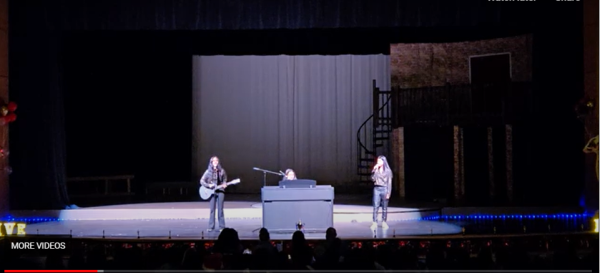A review of KAINA’s new album
Photo from NPR
Like other artists who are a part of the Latin American diaspora in recent years, such as Kali Uchis and Xenia Rubinos (reviewed previously on The Prowl), KAINA has created a unique musical style that style blends genres like R&B, soul, and bolero while writing from the point of view that deals with her Latin American identity. The creativity of KAINA flourishes, for the most part, on her second album, “It Was A Home,” which came out March 4.
The album begins with a song called “Anybody Can Be In Love.” This song, to me, can immediately grab a listener with its lush strings and steady drumming present at the beginning. In addition, the song has a strong psychedelic soul influence persistent throughout and provides an exceptionally lively introduction to the album.
The influence of soul continues throughout the rest of the album. The second song on the album, its title track, also exemplifies it. The song, which captures many feelings in KAINA’s music, is also very touching lyrically. When listening to this song, one can relate to the longing for something that’s no longer there, absolutely relevant to many personally.
“Sweetness” and “In My Mind” are two other songs that showcase the continuing themes of vulnerability. The former has some of my favorite lyrics on the album; “Opening up is hard, I’ll admit it. And I could use a hug, a moment to rest. No, I’m not used to it; give me time to reset. ‘Cause I need it that bad.” “In My Mind” is all about the feeling of hopelessness one can have, with thoughts already made up of something, and being unsure of things, no matter what they are, can get better in one’s life. “Casita,” which features lyrics primarily sung in Spanish and implicitly discussing her Latin American heritage, also deals with this memory dilemma. In an interview, they said that this was the inspiration behind the song; “Casita is all about the people I miss.”
Musically, it’s varied. The rock-influenced “Ultraviolet,” a collaboration with the band Sleater-Kinney, is one of the album’s most daring songs. The song’s first half is noteworthy to me for its guitar riff, but the song’s outro is something that can take a listener by surprise, being dominated by a lead synth, sounding like a calm after the storm.
Overall, I would say this is a mostly good album. The songs where the musical experimentation and lyrical quality shine through, such as “Anybody Can Be In Love,” “It Was A Home,” and “Casita,” as well as the collaborative tracks like “Ultraviolet” and “Blue,” which features Heraldo Negro, are the album’s main highlights for me. However, some songs here fail to make the same impact that a lot of the best songs on this album do, in my opinion, which
leads to inconsistency at times. That is not a knock on KAINA; it’s just an acknowledgment that they’re so talented that they can do better. Listening to this album’s highlights and their first album, “Next To The Sun,” which I felt was superior, assure me they will become a consistently great album artist.










